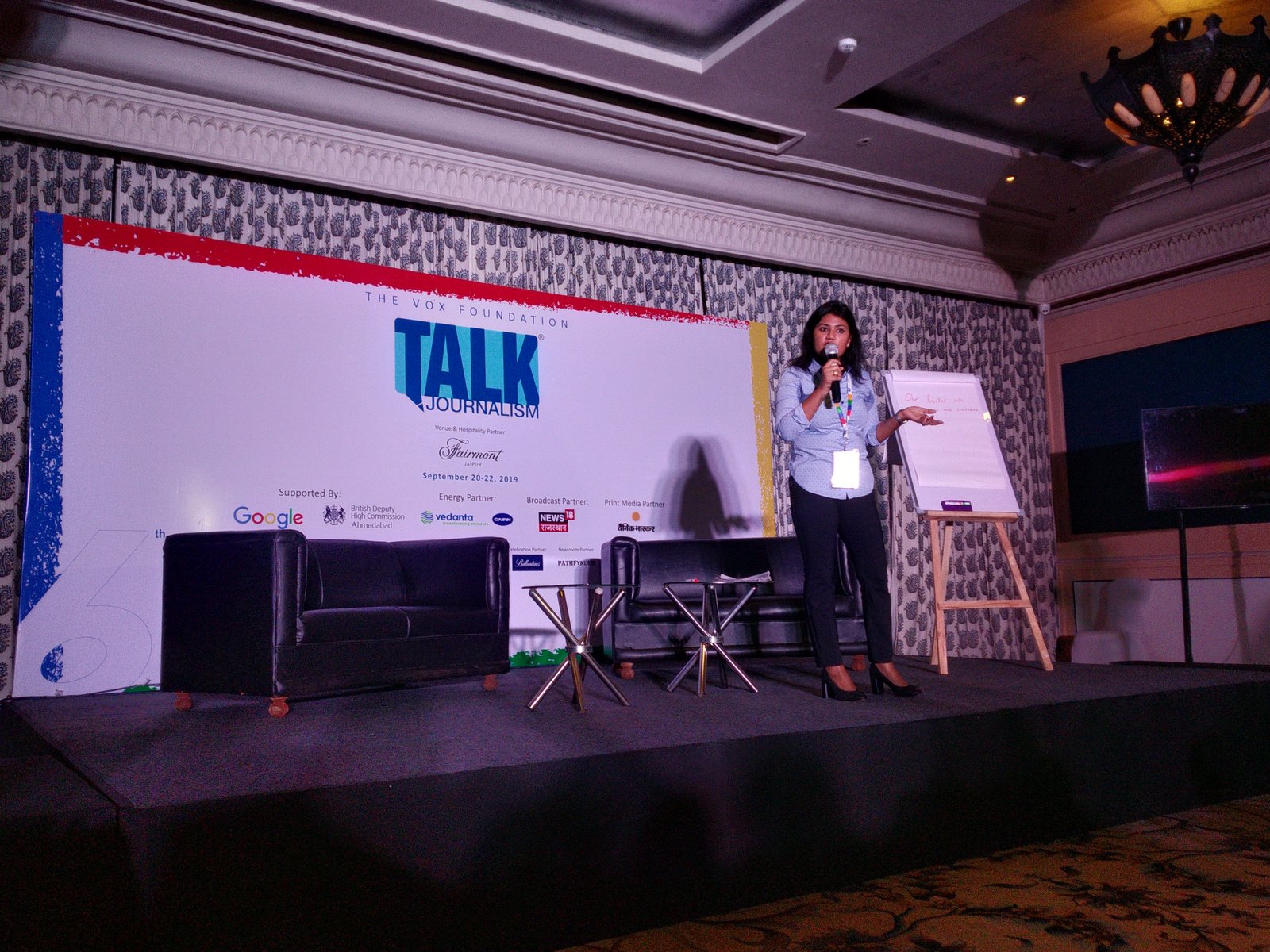Jaipur, 20 September 2019
Do you ever look around yourself only to find objects and perceive them not as they are but as you want them to be? Well, that is what creativity stands for. The same question was presented to the audience at the ‘Creative Writing’ workshop led by Roshini Rajaram on the first day of Talk Journalism 2019.
Creativity is breaking free from the cobwebs of uncertainty. Creative writing is an art not much different than the one of growing and nurturing a tree. For a better understanding, Roshini divided it into seven stages;
1. “The ideas you get are the seeds you sow”
The first step to writing is finding your calling – your genre. An activity was conducted to further elucidate the point. “She looked into the meaning and screamed…..”, said Roshini. “Use your creativity to complete the sentence”. The audience came up with a plethora of twists and ending. While some made it into a horror story, the others chose to turn into comedy. Hence, helping to establish our area of interest.
2. “Your target audience is your soil”
It is imperative to choose your avenue of expression. Whether it is a blog, a novel, a short story or a coffee table book. Your writing will have to meet their respective expectations.
3. “Words are as good as water”
A write up is sure to be a winner if it is expressed using the right words and language. Work for a kid and an adult reader will be articulated in different ways. It is important to write according to your target audience. Sparkling water leads to growth and while contaminated will be detrimental, words possess the same power.
4. “Your perception, your intellect is as essential as sunlight”
As you evolve, so will your content. Precise amount of light facilitates growth so does your knowledge and understanding.
5. “Just like fertilizer acts a catalyst essential research adds to your story”
Your content will be nourished only if you do precise research. Hence, research is your manure.
Excess of chemicals are bad for growth similarly; surplus research may lead you to confusion. Too much of exposure to varied opinions may lead to loss of original thoughts.
6. “A growing tree needs to be trimmed. Similarly, your draft needs to be cut down.”
Go through your draft again and again. Check the flow, sequence and whether you are going in the desired direction. Omit the unnecessary details. Polish your work. Readers will lose interest if there is too much-unwanted information.
7. “Good writing isn’t about using heavy vocabulary. It’s about using the correct words”
Beautifying your content by using relevant words instead of complex jargons. The reader should not have to check their dictionary now and then. It should be an easy read and not a frustrating ride. Unfamiliar words might intimidate readers.
Roshini addressed the creative constraints faced by people by mentioning the law of inertia and how one can get over this. Even though one is afraid of not being able to find the perfect words, even if one can frame only one line at this very moment, all one needs to do is ‘to start writing’. Roshini concluded by saying that the key to successful writing is setting one’s own deadlines and sticking to them.
Text: Snigdha Sony, Muskaan Thakur & Priyamvada Joshi | Copy Edit: Niharika Raina | Photo: Snigdha Sony | Photo Desk: Sagar Samuel | Editorial Coordination: Rupali Soni & Niharika Raina


